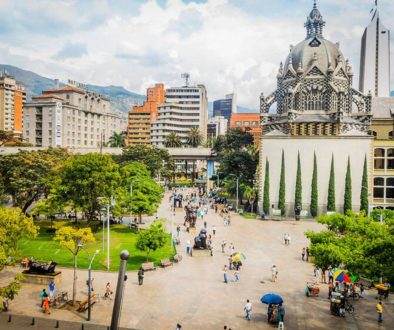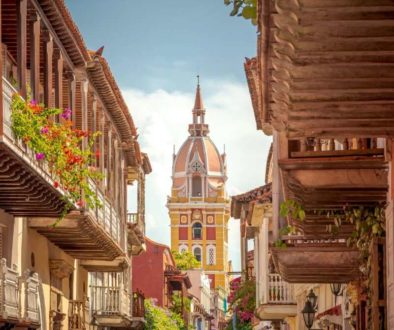Medellin, Colombia: How ‘the most dangerous city on Earth’ got a makeover
In the Museo de Arte Moderno de Medellin I headed for the new galleries of Colombian artists. In the botanical garden I followed boardwalks through tropical rainforest laced with orchids and bamboo into secret corners of birdsong and green shadows.
At the metro, Julian was gratified by how impressed I was by the modernity and the cleanliness. He said the system had been rated as one of the best in the world.
“I know it must seem strange, but when the metro was constructed in 1994 it was the first positive thing that had happened in this city for decades,” Julian said. “It gave us confidence.
“With this metro, we suddenly realised things could be different, that progress and change were possible. In 1994, we needed to be shown that.”
He went on: “And suddenly it was easier to get around the city. People got out of their barrios, their neighbourhoods. They went to work in different places from where they lived. The metro became a vast bridge, joining disparate parts of the city. People mixed. They looked outward. It may be just a metro – but it changed the psychology of the city.”
We hopped off at the Plazoleta de las Esculturas, a grand central square with 23 large bronze sculptures by Fernando Botero, Latin America’s most famous artist, and Medellin’s most famous son. Botero is the Beryl Cook of Latin America. His figures are exaggerated and oversized and fun, and the whole square – promenading couples, strolling families, old people on benches – was infected by their playful character.
Nearby in Parque Berrio, the first square in the city, old men were strumming guitars in the gathering dusk while young girls walked arm in arm.
We followed the crowds into the great Basilica de la Candelaria where parishioners knelt in incense-laden candlelight with their guilt and their griefs. The organist began to play a Bach fugue, the notes echoing into the great vaults of the roof. Like some echo of Fitzcarraldo, the great organ had been transported here from Germany a few centuries ago, coming up the Rio Magdalena from the Caribbean coast and then across the Andes in pieces on horseback.
They could have done with cable cars – the best part of Medellin’s new transport system. Connecting to the metro, the cable cars are the answer to the steep streets of the labyrinthine barrios that climb the mountain sides above the city centre. They carry passengers aloft above the rooftops and the congested lanes in glass pods.
Riding above the city, enjoying the views of the valley and the mountains, passengers relax, conversations start, jokes are made. People shake hands as they disembark, having made new friends. When we took the car up to Santo Dominigo, it was 10 minutes of pleasure rather the hectic stressed hour it used to take.



